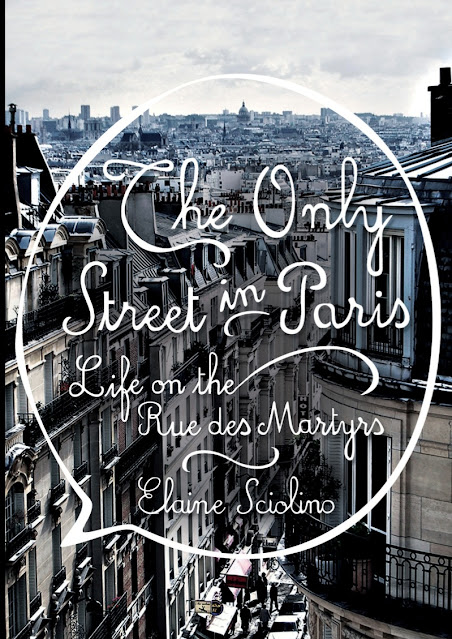Chanel’s Riviera: Glamour, Decadence, and Survival in Peace and War, 1930–1944 by Anne de Courcy.- 2021 - A Paris in July 2024 Work
Paris in July 2024
Paris in July does not just include books. Contributions on your Paris vacation, your favourite meal or restaurant, French movies, music, art, Parisian history and more are very
Coco Chanel
Born August 19, 1893 Saumur, France
Died January 10, 1971 Paris
Events During 1940
12 June: The 51st Highland Division surrendered to German forces due to being surrounded.
13 June: Paris was declared an open city by the French government as the government fled to Bordeaux.
14 June: German troops entered the French capital of Paris.
16 June: French Marshal Henri-Philippe Petain became the prime minister of France, replacing Paul Reynaud. Operation Aerial and Operation Cycle took place by evacuating around 150,000 Allied soldiers from French ports of Cherbourg, St. Malo, Brest, St. Nazaire, La Pallice, Nantes, and Le Havre.
17 June: Petain asked Germany for armistice terms. Finishing off some Allied resistance, the Germans crossed the river Loire and reached the Swiss frontier.
18 June: Adolf Hitler and Benito Mussolini met in Munich Germany. General de Gaulle told the people of France on a broadcast from London on the BBC to resist the Germans.
22 June: France signed an armistice with Germany.
23 June: Adolf Hitler toured captured Paris.
24 June: The French officially surrendered at Compiegne, the site of the German World War I surrender
Chanel’s Riviera: Glamour, Decadence, and Survival in Peace and War, 1930–1944 by Anne de Courcy is primarily set in the French Riviera. The Riviera was during the years of the book a playground and a retreat for the rich of Paris and England.
" In this captivating narrative, Chanel’s Riviera explores the fascinating world of the Cote d’Azur during a period that saw the deepest extremes of luxury and terror in the twentieth century.
The Cote d’Azur in 1938 was a world of wealth, luxury, and extravagance, inhabited by a sparkling cast of characters including the Duke and Duchess of Windsor, Joseph P. Kennedy, Gloria Swanson, Colette, the Mitfords, Picasso, Cecil Beaton, and Somerset Maugham. The elite flocked to the Riviera each year to swim, gamble, and escape from the turbulence plaguing the rest of Europe. At the glittering center of it all was Coco Chanel, whose very presence at her magnificently appointed villa, La Pausa, made it the ultimate place to be. Born an orphan, her beauty and formidable intelligence allured many men, but it was her incredible talent, relentless work ethic, and exquisite taste that made her an icon.
But this wildly seductive world was poised on the edge of destruction. In a matter of months, France surrendered to the Germans and the glamour of the pre-war parties and casinos gave way to the horrors of evacuation and the displacement of thousands of families during World War II. From the bitter struggle to survive emerged powerful stories of tragedy, sacrifice, and heroism.
Enriched by original research and de Courcy’s signature skill, Chanel’s Riviera brings the experiences of both rich and poor, protected and persecuted, to vivid life." From the Publisher Macmillan
The book focuses on the rich and famous. Edward VIII and his wife Walace Simpson, Somerset Maugham and the various romantic partners of Coco Chanel are the most featured persons. Included are details of Coco's involvement with a Nazi major and her life in the Ritz. There is historical data on Vichey France and the Germans in the Riviera. When advised to leave by their government some wealthy British residents drove their Rolls limousines into the sea rather than let Germans or Italians get them. For those who stayed, getting food could be a challenge except for the rich.
We also learn of both the massive retreat from Paris as well as those who accepted German victory and used it as an excuse to steal the property of French Jews. In this book Coco comes across as an oportunist at times and at times genuinely kind.
"Anne de Courcy is a well-known writer, journalist and book reviewer. In the 1970s she was Woman’s Editor on the London Evening News until its demise in 1980, when she joined the Evening Standard as a columnist and feature-writer. In 1982 she joined the Daily Mail as a feature writer, with a special interest in historical subjects, leaving in 2003 to concentrate on books, on which she has talked widely both here and in the United States.
A critically-acclaimed and best-selling author, she believes that as well as telling the story of its subject’s life, a biography should depict the social history of the period, since so much of action and behaviour is governed not simply by obvious financial, social and physical conditions but also by underlying, often unspoken, contemporary attitudes, assumptions, standards and moral codes.
Anne is the Chairman of the Biographers’ Club; and a past judge of their annual Prize. Her recent biographies, all of which have been serialised, include THE VICEROY’S DAUGHTERS, DIANA MOSLEY and DEBS AT WAR and SNOWDON; THE BIOGRAPHY, written with the agreement and co-operation of the Earl of Snowdon. Based on Anne’s book, a Channel 4 documentary “Snowdon and Margaret: Inside a Royal Marriage”, was broadcast on Wednesday 25th June 2008 at 9pm.
THE FISHING FLEET: HUSBAND-HUNTING IN THE RAJ, was published in July 2012. Her most recent book, MARGOT AT WAR: LOVE AND BETRAYAL IN DOWNING STREET, 1912-1916, published in November 2014, was shortlisted for the Paddy Power Political Book of the Year award." From the author’s website
























